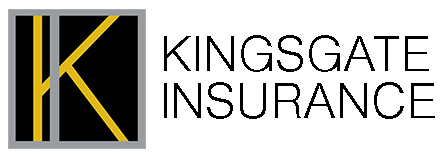How to Read Your Home Insurance Policy and Understand What It Covers
When it comes to protecting your most significant investment—your home—having the right insurance coverage is crucial. However, understanding your home insurance policy can be daunting, with its legal jargon and detailed clauses. This blog aims to demystify the process and help you grasp what your policy covers.
1. Understanding the Basics
A home insurance policy typically comprises several key sections. These include the declarations page, coverage details, exclusions, conditions, and endorsements. Let’s break these down:
- Declarations Page: This is usually the first page of your policy and includes crucial information such as the policyholder’s name, address of the insured property, policy number, coverage limits, deductibles, and the premium amount.
- Coverage Details: This section outlines what the policy covers, divided into different categories like dwelling, personal property, liability, and additional living expenses.
- Exclusions: This part lists what the policy does not cover. Common exclusions include damage from floods, earthquakes, and normal wear and tear.
- Conditions: These are the rules and obligations you and your insurer must follow, such as how to file a claim and how losses are settled.
- Endorsements: Also known as riders, these are additions to the standard policy that can provide extra coverage or modify standard coverage.
2. Types of Coverage
Understanding the types of coverage is vital to knowing what your policy protects:
- Dwelling Coverage: This pays for repairs or rebuilding if your home is damaged or destroyed by a covered peril (like fire, storm, or theft). It typically covers the house itself and any attached structures.
- Other Structures Coverage: This covers damage to detached structures on your property, such as garages, sheds, and fences.
- Personal Property Coverage: This protects your personal belongings, such as furniture, electronics, and clothing, if they are stolen or damaged.
- Liability Coverage: This helps protect you if someone is injured on your property or if you cause damage to someone else’s property. It can cover medical bills, legal fees, and repair costs.
- Additional Living Expenses (ALE): Also known as Loss of Use. If your home is uninhabitable due to a covered loss, ALE covers the costs of living elsewhere temporarily, including hotel bills, restaurant meals, and other living expenses.
3. Reading the Policy
When reading your home insurance policy, take the following steps:
- Review the Declarations Page: Verify that all personal and property information is accurate and check the coverage limits and deductibles.
- Understand Your Coverage: Read through the coverage sections carefully. Know what is covered and the extent of the coverage. Pay attention to limits on certain items, such as jewelry or electronics.
- Note the Exclusions: Make sure you understand what is not covered. This can prevent unpleasant surprises when you file a claim.
- Check the Conditions: Be aware of the conditions you need to meet to keep your coverage valid, such as maintenance obligations and reporting damages promptly.
- Look at the Endorsements: If you have added any riders or endorsements, ensure you understand how they modify your policy.
4. Common Pitfalls and Tips
- Assume Nothing: Never assume that something is covered without verifying it in your policy. For instance, most standard policies do not cover flood or earthquake damage.
- Regularly Update Your Policy: As your life changes—like home improvements or purchasing valuable items—update your policy to ensure adequate coverage.
- Know Your Deductible: Understand how much you’ll need to pay out of pocket before insurance kicks in.
- Shop Around: Insurance rates and coverage options can vary widely. Compare different policies to find the best coverage for your needs.
5. Final Thoughts
Reading your home insurance policy might seem tedious, but it’s an essential task to ensure you’re adequately protected. By understanding the different sections and what they cover, you can make informed decisions and avoid costly misunderstandings. If you’re ever in doubt, don’t hesitate to contact your insurance agent for clarification.
By taking the time to familiarize yourself with your policy, you can rest easy knowing that your home—and everything in it—is safeguarded against life’s unexpected events.





Leave a Reply
Want to join the discussion?Feel free to contribute!